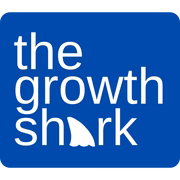Understanding how to use Google's "People Also Ask" and "More Searches" features can significantly improve your cause marketing SEO strategy.
In this comprehensive guide, we will delve into various tactics that can help mission-led businesses enhance their online presence and reach a wider audience.
First, we'll dive deep into leveraging the power of "People Also Ask" and "More Searches" features for enhanced cause marketing SEO success.
Then we'll explore the importance of monitoring keyword performance using Google Search Console and identifying untapped keyword opportunities.
Powered with that info, you'll learn to optimize your website to show up on “People Also Ask” and “More Searches.”
Leveraging "People Also Ask" and "More Searches" Features

Improve your cause marketing SEO by using Google's "People Also Ask" and "More Searches" features.
These tools will help you identify new keyword opportunities, optimize existing content, and create targeted, high-quality pieces that appeal to both users and search engines alike.
Analyzing Data from the "People Also Ask" Feature
The "People Also Ask" (PAA) feature is a goldmine for discovering related questions users are searching for.
To leverage this information, perform a Google search with your primary keyword or topic in mind.
Scroll down until you find the PAA box containing relevant questions.
Click on each question to expand it and reveal even more queries.
- Note down these questions as potential subheadings or topics within your content.
- Create engaging answers to address these user concerns directly.
- Incorporate long-tail keywords found in the PAA section into your content strategy.
Optimize the content on your website to include common questions surrounding your keyword.
If your website turns up front and center in the “People Also Ask” section, users will be more likely to click on your link and visit your website.
Utilizing Insights from "More Searches" Suggestions
Besides the PAA feature, another valuable resource is Google's "More Searches" suggestions located at the bottom of SERPs (Search Engine Results Pages).
These suggested searches can help you uncover additional keywords or phrases related to your main topic. Here's how:
- Type in one of your chosen keywords into Google Search.
- Scroll down past all results until you reach "More Searches.”
- Click on any of the suggested searches that seem relevant to your cause marketing SEO strategy.
- Analyze these new SERPs for additional keyword ideas and potential content topics.
Use “More Searches” in your SEO research to improve your cause marketing SEO strategies.
All of that information is valuable to your keyword research and increased sales.
By incorporating insights from both "People Also Ask" and "More Searches" features, you can effectively optimize your existing content and create new pieces targeting untapped keywords.
Combining both resources will ultimately improve your cause marketing SEO performance, driving more traffic and engagement to your website.
Utilizing Google Search Console for Cause Marketing SEO

Discover the exact search queries users are typing into Google by using Google Search Console.
This tool reveals which terms generate clicks for your website and highlights unanticipated keywords your content ranks for, helping you optimize existing content or create new pieces targeting these unexpected keywords.
Monitoring Keyword Performance with Google Search Console
To keep track of how well your cause marketing SEO efforts are performing, regularly monitor keyword rankings in the Google Search Console.
By analyzing this data, you can pinpoint areas where optimization is needed and adjust your approach accordingly.
For example, if certain pages aren't ranking as high as desired, consider optimizing their on-page elements, such as meta titles and descriptions, to better align with targeted keywords.
Identifying Untapped Keyword Opportunities
-
Analyze impressions: Look at the number of times a specific query has been shown in search results but hasn't received any clicks.
High impressions indicate potential interest from users, but the content is not interesting enough to click through.
-
Evaluate click-through rates (CTR): Low CTRs could mean that either the title or description doesn't accurately reflect what users expect when they click on it.
In such cases, reevaluate these elements to ensure they're more appealing and relevant to user intent.
-
Audit position changes: If a page's ranking drops significantly over time despite maintaining consistent traffic levels or even experiencing an increase in organic visits, investigate possible reasons behind this decline and adapt accordingly.
Culprits could be algorithm updates or newly emerging competitors.
Incorporating insights from Google Search Console into your cause marketing SEO strategy will help you better understand how users interact with your content.
By utilizing Google Search Console, mission-led businesses can gain valuable insights into their website's performance and uncover untapped keyword opportunities.
By conducting thorough keyword research, you can match up your findings with “People Also Search” and “More Searches” results to enhance your cause marketing SEO.
Conducting Thorough Keyword Research

To improve your cause marketing SEO, it's essential to conduct thorough keyword research before launching a new piece of content or updating an existing one.
By using advanced tools like Ahrefs and Moz's Keyword Explorer, you can gain valuable insights into the most relevant keywords for your target audience.
Using Ahrefs and Moz's Keyword Explorer for In-Depth Analysis
Ahrefs and Moz's Keyword Explorer are powerful tools that provide detailed information on search volume, keyword difficulty, and competition.
They also offer suggestions for related keywords that may not have been considered initially.
To enhance your content strategy and improve both user engagement and search engine visibility, it is crucial to incorporate these valuable insights.
This approach will not only help you connect with users on a deeper level but also increase your visibility in search engine results.
Optimizing Meta Titles, URLs, and File Names with Targeted Keywords
In addition to conducting comprehensive keyword research, it's crucial to optimize various elements of your web pages, such as meta titles, URLs, and file names, by including relevant keywords.
This helps search engines understand the focus of each page more effectively while providing users with clear expectations about what they'll find when clicking through from search results.
-
Meta Titles: Create descriptive yet concise titles featuring primary keywords near the beginning without exceeding 60 characters in length.
-
URLs: Incorporate main target keywords within clean URL structures (e.g., example.com/cause-marketing-seo-tips).
-
File Names: Name image files descriptively using hyphens between words (e.g., cause-marketing-seo.jpg) and include relevant keywords where appropriate.
-
Alt Text Attributes: Add descriptive alt text to images, including target keywords when it makes sense within the context of the image description.
This not only improves accessibility for visually impaired users but also enhances SEO performance.
To elevate your cause marketing SEO and attract a larger audience to your website, it is essential to adhere to these guidelines and employ effective keyword research strategies consistently.
Conduct comprehensive keyword research and incorporate the questions and content discovered through the "People Also Ask" and "More Searches" features.
Use what you discover to optimize your cause marketing efforts and improve your search engine visibility.
These practices are integral components of any successful cause marketing SEO strategy.
Adapting to Modern Machine Learning Algorithms

As search engines like Google continue to evolve, it's essential for cause marketing SEO strategies to adapt accordingly.
One significant change in recent years is the introduction of machine learning algorithms that make pinpointing specific ranking factors increasingly difficult.
This means businesses need to focus on improving quality signals related directly to backlinks from authoritative sites.
Understanding the Impact of Machine Learning on SEO Strategies

Machine learning algorithms, such as Google's RankBrain, analyze vast amounts of data and user behavior patterns in order to determine which content best satisfies a particular query.
As these algorithms become more sophisticated, traditional keyword-based optimization techniques may not be enough on their own.
Instead, marketers should prioritize building high-quality backlinks from reputable sources while also ensuring their content provides genuine value for users.
Techniques to Acquire High-Quality Backlinks
-
Create infographics: Eye-catching visuals can attract attention and encourage sharing among users who find them valuable or interesting.
By creating informative infographics related to your cause marketing niche, you increase the likelihood that other websites will link back to your site as a source.
-
Niche blogger interviews: Reach out and collaborate with bloggers within your industry by offering expert insights or conducting interviews about relevant topics.
These collaborations often result in valuable links pointing toward your website.
- Publish round-up articles: Compile lists featuring top resources or experts within your field - this type of content typically attracts links from those mentioned and others interested in similar subjects.
Embrace these tactics and incorporate them into your cause marketing SEO strategy.
You can navigate the dynamic world of search engine algorithms and enhance the visibility of your website in organic search results.
Keeping up with modern machine learning algorithms allows businesses to optimize their SEO strategies and prioritize the acquisition of high-quality backlinks.
Additionally, catering to mobile device users is crucial in today's digital landscape, necessitating the implementation of AMP technology and creating a website that offers an optimal user experience across all devices.
Catering to Mobile Device Users

Prioritize mobile-friendliness in your cause marketing SEO strategy since mobile device users make up an ever-growing proportion of internet searches.
Employ Accelerated Mobile Pages (AMP) technology to ensure a smoother browsing experience while prioritizing elements, including text size, additional information, pinch zoom functionality, and more.
Implementing Accelerated Mobile Pages (AMP) Technology
Accelerated Mobile Pages (AMP) is an open-source project designed to improve the performance of web content on mobile devices.
You can improve your website's loading speed and potentially enhance your search engine rankings by incorporating AMP technology.
To begin with AMP, you can refer to Google's guide on creating valid AMP pages.
Design Considerations for Optimal Mobile User Experience
The way your website looks for mobile users and beyond will affect the amount of time a user stays on your website.
The last thing you want is for someone to exit the site the moment it loads because of design.
To cater effectively to mobile device users and improve your cause marketing SEO efforts, consider the following design aspects:
-
Text Size: Ensure that all text is legible without requiring users to zoom in or out.
-
User Interface Elements: Make sure buttons and links are large enough for easy tapping on touchscreens.
-
Pinch Zoom Functionality: Allow visitors the option to use pinch-to-zoom gestures when necessary by not disabling this feature through CSS or JavaScript code.
-
Long-Form Content: Review long-form content pieces such as articles or blog posts for readability and user engagement potential.
Break them down into smaller sections with clear headings and subheadings.
- Secondary Information: Place secondary information, such as sidebars or related content links, in a way that doesn't obstruct the main content on smaller screens.
Incorporating these design considerations into your website will not only enhance the mobile user experience but also contribute to better cause marketing SEO performance overall.
Businesses can ensure their website is optimized to provide the best possible performance on any device.
Strategies to do so include implementing Accelerated Mobile Pages (AMP) technology and taking into consideration design elements for a better mobile user experience.
Moving forward, incorporating image thumbnails into your SEO strategy will further optimize your search engine visibility and help you reach more potential customers.
Incorporating Image Thumbnails into Your Strategy

In the past few years, Google introduced image thumbnails for more search results on mobile devices.
This highlights the importance of incorporating images and optimizing file sizes into your overall page architecture strategy to improve cause marketing SEO.
The Significance of Image Thumbnails in Search Results
Image thumbnails have become a crucial aspect of modern SEO strategies as they can significantly enhance user experience and engagement.
When users encounter an appealing miniature accompanying a pertinent search outcome, they are more likely to select it and be directed to the website.
Optimizing Images and File Sizes for Better SEO Performance
To make the most of this feature, it's important to ensure your images are optimized for both desktop and mobile devices.
Here are some tips on how you can do so:
-
Select appropriate file formats: Use JPEG format for photographs or complex illustrations with many colors; use PNG format if you need transparency or when dealing with simple graphics like logos.
- Compress files without losing quality: Utilize tools such as TinyPNG, which compresses both PNGs and JPEGs while maintaining their visual quality.
-
Add descriptive alt text attributes: Alt texts not only provide context about the image but also help improve accessibility for visually impaired users who rely on screen readers.
Make sure these descriptions include relevant keywords related to your cause marketing efforts.
-
Optimize image dimensions: Ensure that your images are not too large, as this can slow down page load times and negatively impact user experience.
Resize them to fit the content area of your website while maintaining a good balance between quality and file size.
Incorporating these strategies into your cause marketing SEO efforts will help you leverage the power of image thumbnails in search results.
This will ultimately drive more traffic to your site and increasing engagement with potential customers.
FAQs in Relation to How to Use Google's "People Also Ask" and "More Searches" to Improve Your Cause Marketing SEO

How to Improve Your Cause Marketing SEO with Google's "People Also Ask" and "More Searches"
If you're looking to improve your cause marketing SEO, you need to focus on optimizing your content for search engines.
While there are many different strategies you can use, one of the most effective is to take advantage of Google's "People Also Ask" and "More Searches" features.
Search multiple keywords related to your business to see what you find.
What Is Google's "People Also Ask" Feature?
Google's "People Also Ask" feature is a tool that provides users with additional questions related to their search query.
These questions appear in a dropdown format and are designed to help users find more relevant information.
By optimizing your content to answer these questions, you can improve your chances of appearing in Google's search results.
What Is Google's "More Searches" Feature?
Google's "More Searches" feature is a tool that provides users with additional search queries related to their original search.
These queries appear at the bottom of the search results page and are designed to help users find more relevant information.
How to Use "People Also Ask" and "More Searches" to Improve Your Cause Marketing SEO
Google provides related keywords right in front of you featured in these sections. Use the information to your benefit.
Here are some tips for using Google's "People Also Ask" and "More Searches" features to improve your cause marketing SEO:
- Research relevant keywords and phrases related to your cause marketing campaign using tools like Google's Keyword Planner or Ahrefs.
- Use these keywords and phrases to optimize your content to answer the questions provided by the "People Also Ask" feature.
- Include related search queries provided by the "More Searches" feature in your content to improve your chances of appearing in Google's search results.
- Create high-quality, relevant content that provides value to your target audience.
- Monitor your performance using tools like Google Analytics and Google Search Console to track your progress and make adjustments to your SEO strategy as needed.
Reach All Your Cause Marketing SEO Goals
Boosting your cause marketing efforts and enhancing your online visibility can be achieved by leveraging Google's "People Also Ask" and "More Searches" features.
These powerful tools enable you to optimize your cause marketing SEO, making it easier for your target audience to discover your content and engage with your cause.
You can significantly improve your chances of connecting with your desired audience and accomplishing your marketing objectives.
This is done by focusing on creating valuable, well-crafted content that directly addresses user queries and incorporates relevant search queries,
To maximize the effectiveness of these features, it's essential to focus on producing high-quality content that aligns with the intent of user queries.
Your content should provide valuable information, address user needs, and offer actionable insights related to your cause.
Additionally, ensuring that your content is well-structured, easy to read, and optimized for search engines will further enhance your visibility and user experience.
In conclusion, harnessing the power of Google's "People Also Ask" and "More Searches" features can significantly improve your cause marketing SEO and increase your online visibility.
Our team at The Growth Shark can help you do just that and more. Set up a video call to talk about our potential cause marketing partnership.
















